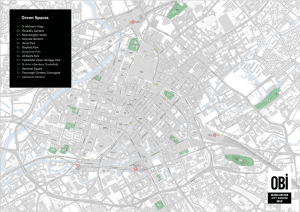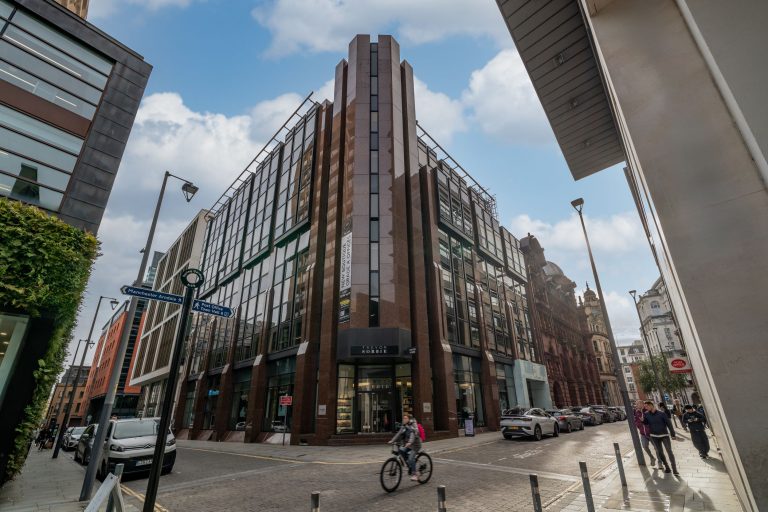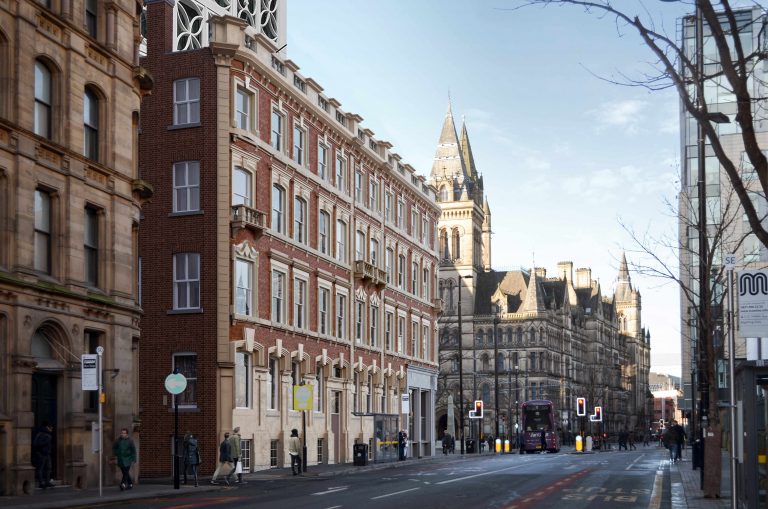Manchester’s Green Spaces
Lewis Mills | 21 October 2022
What is the value of green spaces in an urban city?
Last year, 83.9% of the UK population were recorded as living within an urban setting. This type of living limits people’s connection to nature, and with rates of urbanization increasing, easily accessible green spaces are becoming more and more important. When such spaces are not available, the exposure to environmental hazards such as noise and air pollution can increase for urban residents, having a negative effect on both their physical and mental health.
According to the mental health charity ‘Mind’, finding ways to bring nature into your everyday life and routine brings with it a whole range of benefits. From improving mood, physical health, and self-esteem, to relieving stress and creating opportunities for new connections to be made, spending time in nature can be extremely helpful.
Studies have shown that there are many benefits to providing green spaces in urban areas, such as:
• Breathing spaces – Calming environment to get away from the busy centre.
• Healthy spaces – Inviting places to allow people to get active.
• Aesthetic spaces – Making gardens look good from external pedestrians.
• Meeting spaces – Allowing for nicer places to meet clients or friends.
• Working spaces – Attractive places for people to work and get away from the city.
• Creative spaces – Green spaces bringing inspiration and creativity to people’s work.
As our cities grow and more people move into already crowded spaces, there is growing expectations for transformation of our urban areas into increasingly healthier places to live. The first step is awareness of what is accessible already. OBI have prepared a city centre map detailing all the green spaces.
Where are the green spaces in the City Centre?
1. St Michael’s Flags – The pleasant park named St Michael’s Flags is located between Aspin Lane and Old Mount Street. Located on the site of the former St Michael’s Church the site and area has a rich historical heritage. The church was demolished in 1935, however, some gravestones from the church yard remain.
2. Piccadilly Gardens – Piccadilly Gardens is an open-space area situated in the heart and soul of the city centre. As an accessible gateway to the city, it provides both work and leisure opportunities for many people. Perfectly situated within walking distance of Manchester’s busy shopping and business areas and on the edge of the city’s creative Northern Quarter, Piccadilly Gardens is surrounded by a mix of historic and modern buildings. Piccadilly Gardens is the central hub of Manchester’s public transport system.
3. New Islington Green – General Projects and award-winning architects Hawkins Brown are set to transform a New Islington brownfield site to create ‘Electric Park‘– a sustainable and low carbon campus complete with 350,000 sq ft of modern workspaces, alongside two acres of new public space.
4. Sackville Gardens – A small park in the heart of the gay village, which features memorials and space to reflect. We host regular events, including Manchester Pride. The daily free tour of Manchester starts here every day at 11am, by the Alan Turing Memorial. The park is maintained by the ‘Friends of Sackville Gardens’
5. Vimto Park – Vimto park is located near the University Manchester. It is a nice place for people to sit there and have a break from indoor working activities, especially university students. Beaten by years of Manchester’s wind and rain, the monument was restored in 2011 and is now looking as vibrant as ever.
6. Mayfield Park – Mayfield Park, Manchester city centre’s first new public park in more than 100 years, will be opening to the public for the first time this week. Over the last 18 months the vast, mostly derelict, former industrial site next to Piccadilly Station has been transformed into a stunning, accessible and varied green space for all to enjoy.
7. Symphony Park – The park will host a variety of events with something that everyone can enjoy. From live music to pop up food markets, the public interaction will be activated all year round. Circle Square provides the perfect place to bring together families, community, art and culture to create a unique destination.
8. All Saints Park – The gardens are set on Oxford Road, the little oasis is often populated with students from the neighbouring university, reading, sunbathing, or just cutting through the grass on the way to the next lecture.
9. Castlefield Urban Heritage Park – This park is a relaxing walk to the public, with the views of roads, rails and trams with the surroundings of both Victorian and modern buildings. Originally, this place was the site of Masurium, a Roman Fort which today works as a peaceful retreat for all. This 7-acre park is abode to the building of the Museum of Science and Industry, the Roman fort of Masurium, outdoor terraces and many bars and restaurants where one can experience the true vibes of the city.
10. St John’s Gardens, Castlefield – These gardens are a nice place calm place for socializing, near the museum of science and industry. The Gardens were formerly the site of St. John’s Church and Graveyard which was demolished in 1931. A monument to the church and the 22,000 people buried in its grounds stands in the middle of the gardens where the original entrance of St. John’s Church lay.
11. Hardman Square – This is the new ‘urban oasis’ which is set to add a green space to the city centre. The landscape proposal begins with working with the existing semi-mature trees and the positioning of a kiosk and a larger barn structure, both made from timber.
12. Parsonage Gardens, Deansgate – These gardens are primarily used as a place of escaping/ relaxing after working or shopping around Deansgate. The Gardens are bordered by large and impressive buildings. Most are in orange-red brick or terracotta, although one modern-style steel and glass structure merges well into its surroundings.
13. Cathedral Gardens – Cathedral Gardens is Manchester’s newest public open space, located between Manchester Cathedral, Cheetham’s School of Music and the National Football Museum. The new area is built with new natural stone and granite paving, surrounding newly created lawned areas with mature trees, which now provides a green oasis within the busy city centre. At the heart of the gardens is a £500,000 specially designed water feature, which incorporates designs reflecting the seasons throughout the year.
What does the future hold for green spaces?
Green spaces will be important for the future of major cities as the public have claimed since COVID-19 hit the UK they have been spending more time outside and the nature and well-being is a crucial part of their lives. The main reasons the public want the option of a green space with everything they do is to allow their wellbeing and mental health to be at an all-time high.
There will also be an increase in green spaces due to the air quality issues and therefore helping the UK live in much a safer and more sustainable environment. This is very important due to the recent announcement of the Prime Minister wanting a tough new carbon cutting target to reduce the threat of climate changes all around the world.


